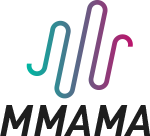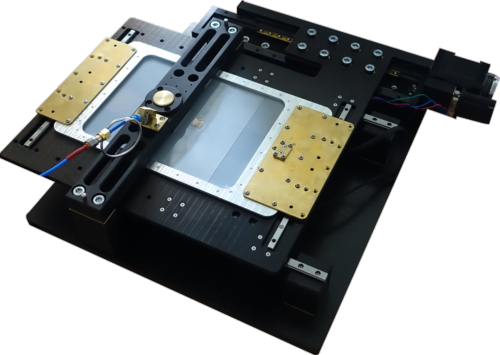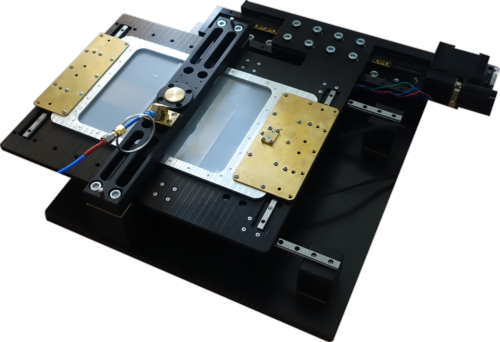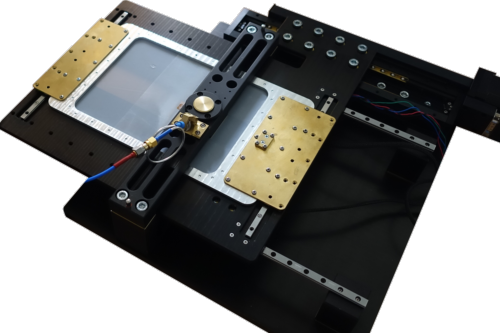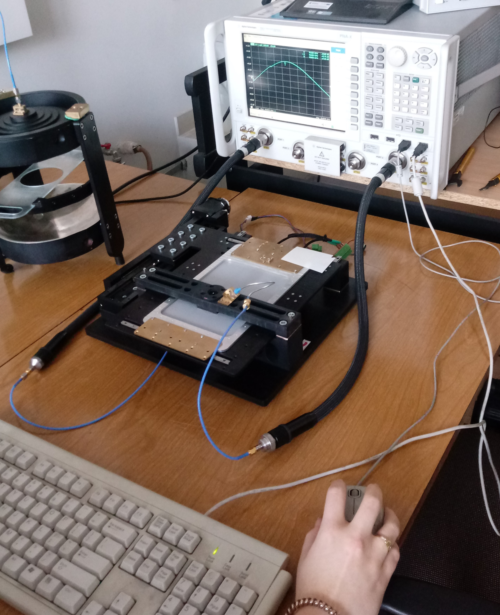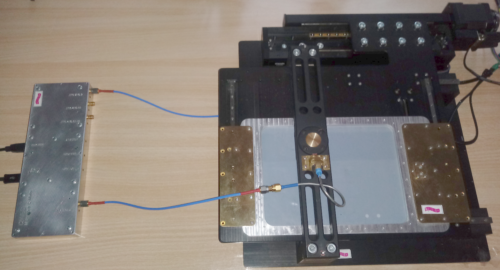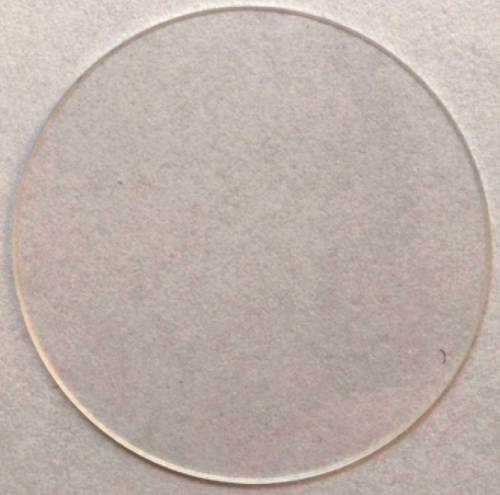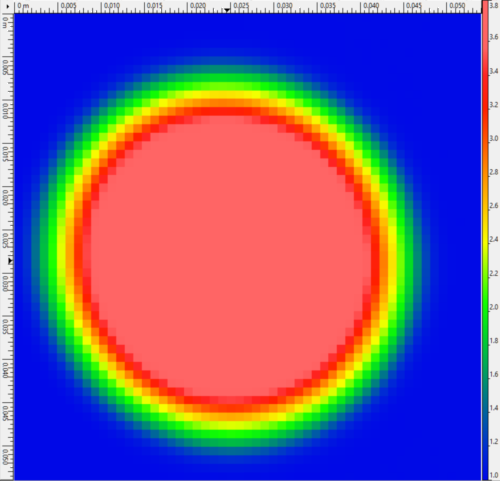2D SPDR Scanner for Material Imaging
The measurement setup comprises a 10GHz SPDR, motorized table for sample placement, and handheld Q-Meter device, dedicated to fast and accurate Q-factor extraction, replacing expensive and bulky VNA. The entire measurement setup and process is conveniently controlled through laptop application, ensuring the system robustness, portability, and affordability for large group of researchers. The two main elements of the setup, SPDR scanner and Q-Meter, have been validated with reference to both, commercially available SPDR and full-scale, full-functionality laboratory VNA, proving measurements accuracy within bounds defined in IEC norm. The
In the SPDR method we measure the material parameters averaged over the horizontal section of the SPDR cavity including the high-permittivity dielectric resonator and its close neighbourhood. The averaging is weighted by the density of the electric energy distribution in the SPDR slot. For example in the case of a 10GHz SPDR when the centre of the resonator is in a point x0,y0 each point of the measured material placed closer than about 10 mm contributes somehow to the measurement result (with the highest contribution of the points situated at about 3-5 mm from the x0,y0, point). That property has to be taken into account when inhomogeneous planar materials need to be measured. Figure below presents QWEDís 2-dimensional scanner of laminar materials using an SPDR at 10GHz. After scanning the material parameters with regular space intervals and applying special signal processing techniques it is possible to obtain the map of permittivity or loss tangent with much better resolution than that obtained directly from the measurements.
In the SPDR method we measure the material parameters averaged over the horizontal section of the SPDR cavity including the high-permittivity dielectric resonator and its close neighbourhood. The averaging is weighted by the density of the electric energy distribution in the SPDR slot. For example in the case of a 10GHz SPDR when the centre of the resonator is in a point x0,y0 each point of the measured material placed closer than about 10 mm contributes somehow to the measurement result (with the highest contribution of the points situated at about 3-5 mm from the x0,y0, point). That property has to be taken into account when inhomogeneous planar materials need to be measured. Figure below presents QWEDís 2-dimensional scanner of laminar materials using an SPDR at 10GHz. After scanning the material parameters with regular space intervals and applying special signal processing techniques it is possible to obtain the map of permittivity or loss tangent with much better resolution than that obtained directly from the measurements.

